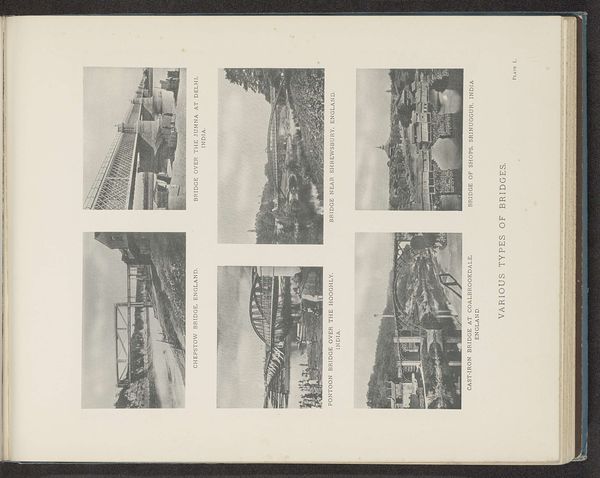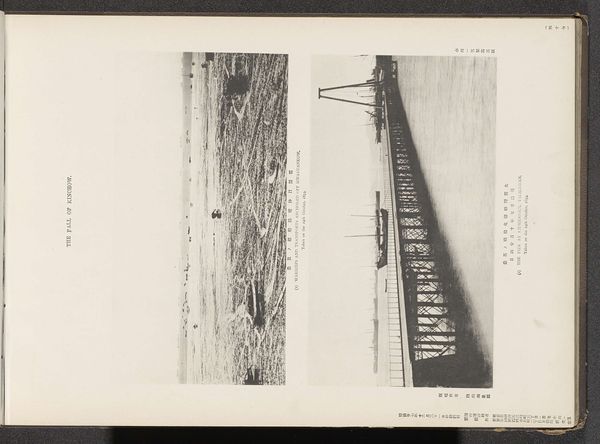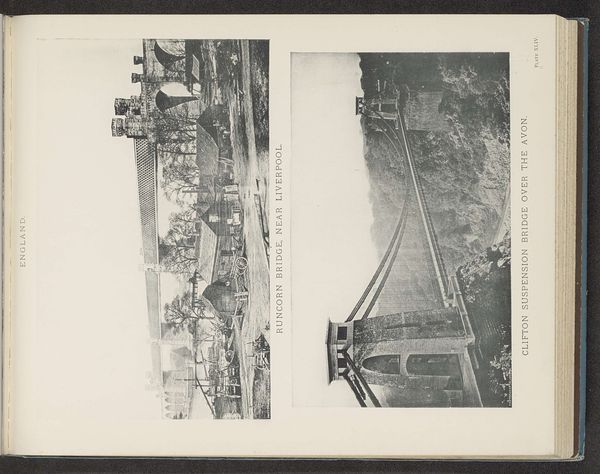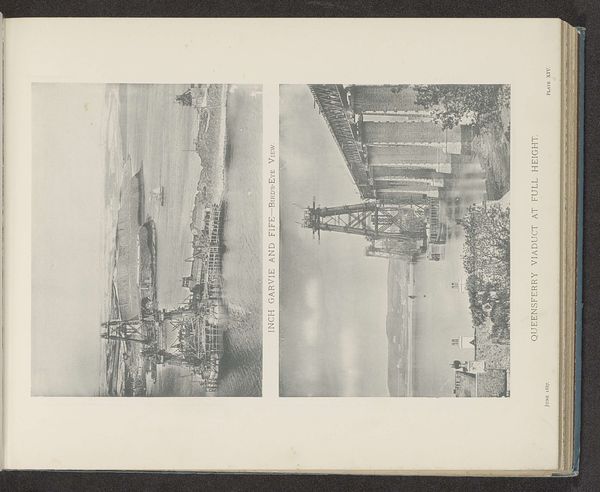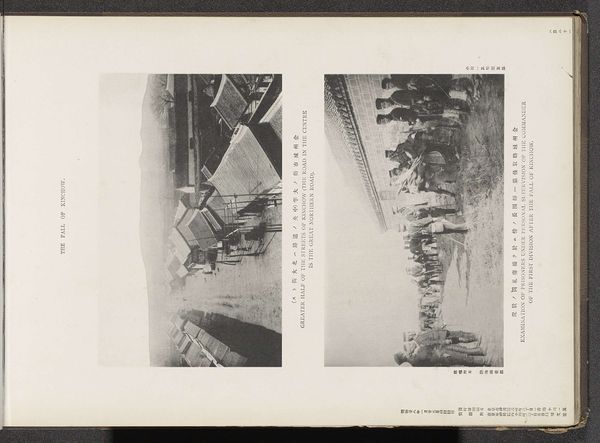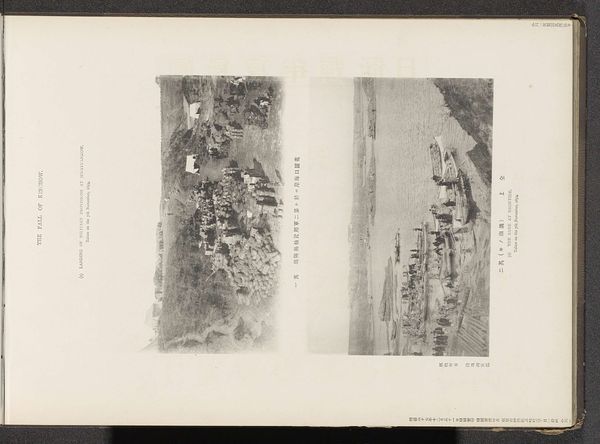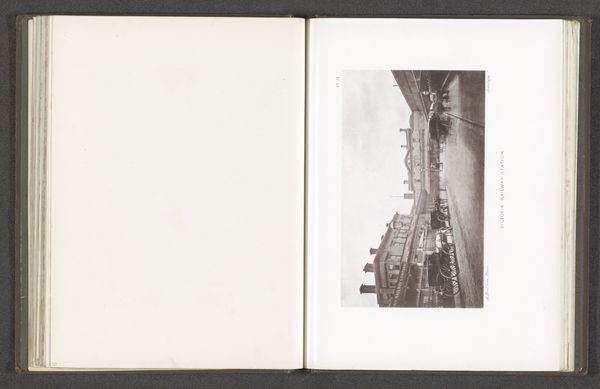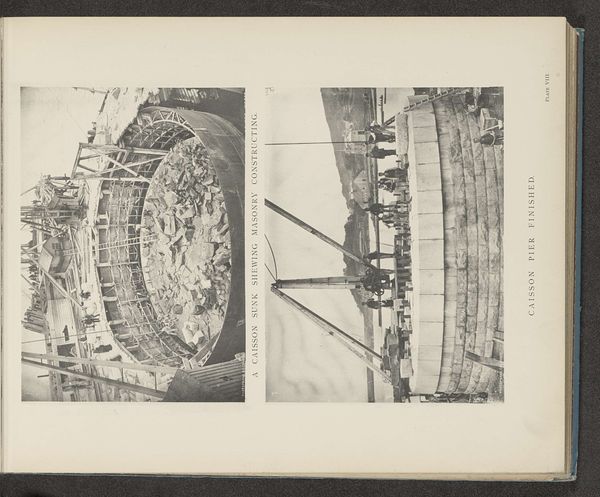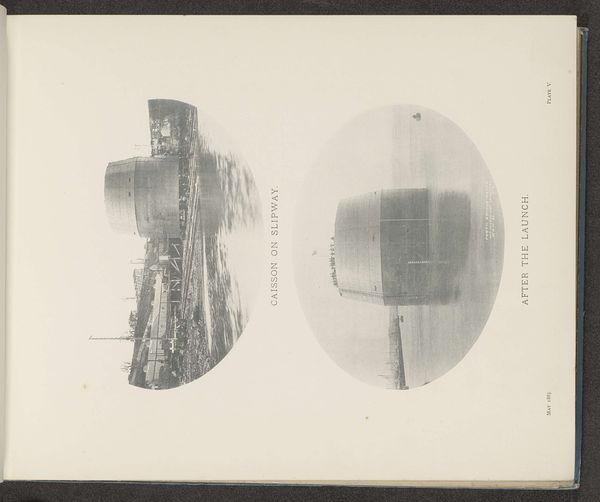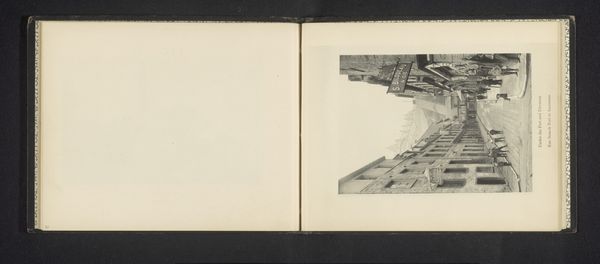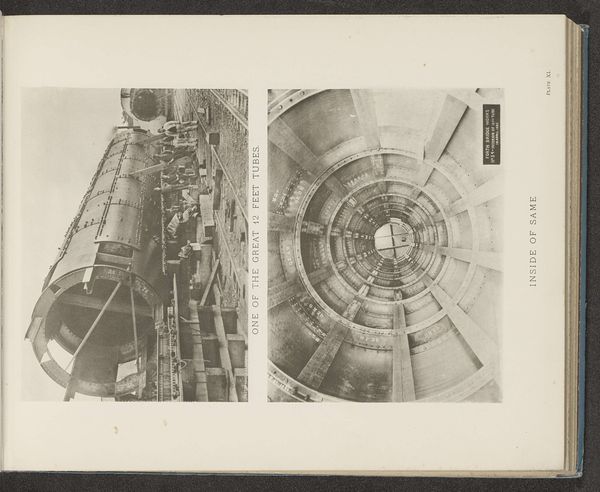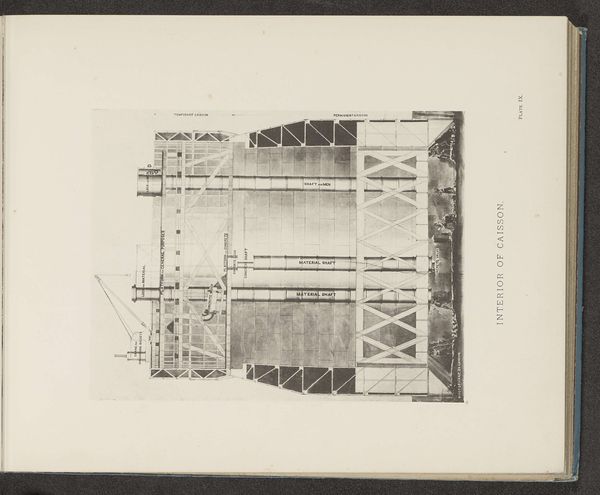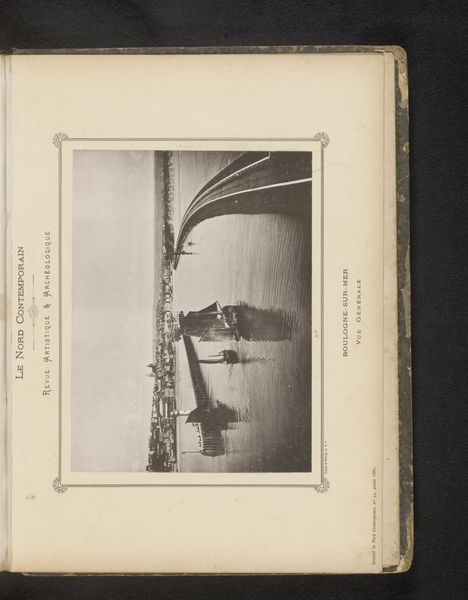
print, photography
# print
#
pencil sketch
#
landscape
#
photography
#
cityscape
Dimensions: height 417 mm, width 336 mm
Copyright: Rijks Museum: Open Domain
Curator: Here we have an anonymous print titled "Douro Bridge," dating from before 1890. What strikes you about it? Editor: The composition immediately pulls me in; the bridge's arch mirrors a hopeful sentiment, bridging divides not just geographically but conceptually. There's something deeply symbolic about that reaching arc, especially viewed alongside its completion. Curator: Precisely. The print juxtaposes two states: the bridge in progress and the completed structure. It's essentially a study of labor, of tangible material transformed by human agency. We witness not just an image, but the very process of industrial creation, emphasizing materials like iron and the intense physical labor required. Editor: Yes, and consider what that arch represents. Beyond the practical connection, the arch, historically, signifies triumph, a gateway, promise. Placed within a cityscape, the print also memorializes humanity's triumph over nature. Curator: Right, which begs the question, for whom does it symbolize triumph? It documents the material transformation through engineering, yet the individual laborers— the "hands" involved in this vast transformation—are absent, reduced to mere statistics of social transformation. Editor: While it's true the figures are absent, their implied presence fuels the symbolic weight of the image. This isn't merely an engineering diagram. The completion is not just a construction achievement. There is a cultural significance too - as a path, linking communities and symbolizing progress. This speaks to our collective striving for connection. Curator: True, but in the construction of this progress, there were winners and losers. There was investment, exploitation of workers... the cost of modernity wasn’t simply material. Editor: A sober reminder. Still, images like these solidify a collective memory of our aspirations for a better future. In essence, whether a drawing, print, or later, photograph, such an image becomes a visual touchstone, embedded deeply into cultural iconography, irrespective of who truly gained, lost, or toiled. Curator: Indeed. By looking at these prints we examine not only physical remnants of industry, but also we interrogate a deeper record of labor. Editor: And that allows us to recognize their broader significance in how societies portray and remember their achievements through enduring icons.
Comments
No comments
Be the first to comment and join the conversation on the ultimate creative platform.
